Prostate disease is one of the most common and insidious diseases affecting men over the age of 40.At first, patients may not even realize there is a problem, but over time, symptoms will become apparent.Without prompt medical attention, prostatitis can become chronic and complications may arise.Different types of prostatitis can be distinguished based on the severity, cause and nature of the disease course.
Prostatitis can be divided into the following types according to the form of occurrence:
- spicy; spicy;
- chronic;
- latent.
What kind of prostatitis is caused by:
- Herpes;
- bacteria;
- calculus;
- stagnation; stagnation;
- contagious;
- Suppurative;
- Chlamydia;
- Fungi;
- gonorrhea;
- Fibrous.
Classification
Faced with an unpleasant genitourinary disease like prostatitis, many men want to know why they develop prostatitis.
Understanding the cause of the disease can help make an accurate diagnosis and promote effective prevention.
According to traffic type
According to the course of the disease, prostatitis is divided into acute, chronic and latent, which is further divided into catarrhal, follicular and parenchymal (purulent) prostatitis.
The disease can be divided into the following forms:
- With catarrhal prostatitis, the male body experiences urinary disturbances and vaginal discomfort.This is the most common type of acute prostatitis.
- Follicular prostatitis is characterized by symptoms such as groin or anal pain, increased body temperature, and severe urinary problems (difficulty urinating).In more severe cases, when patients put off seeing a doctor, they experience acute pain when urinating and urinary retention.
- Parenchymal prostatitis - Abscess formation in the body of the prostate gland.In this case, symptoms include fever, severe pain, and frequent need to urinate.The temperature rises to 39-40°C and defecation becomes almost impossible.
acute prostatitis
Acute prostatitis is a disease of prostate inflammation that occurs within a short period of time and has a variety of symptoms.Negative influence of pathogenic microbiota causes glandular swelling.Pathogenic bacteria can destroy the integrity of the tissue, causing persistent discomfort in the pelvic area even at rest.
There are several preferred ways for infection to enter the prostate:
- For rectal inflammation - lymphatic route;
- After infectious diseases - hematogenous;
- Directly through the urethra - canaliculus.
Excessive accumulation of prostate contents creates favorable conditions for bacteria to multiply, causing various complications:
- abscess;
- Prostatic adenoma;
- prostate cancer;
- loss of effectiveness;
- Infertility.
The symptoms of prostatitis are so painful that patients are forced to urgently seek help from their doctors.If this is not done in time, prostatitis will become chronic and more difficult to cure.Antimicrobial therapy combined with immune system-boosting drugs can be effective in fighting this disease.
chronic prostatitis
Symptoms of chronic prostatitis are often found against the background of prostatic congestion, which results from an untreated acute illness.It usually occurs in men over 50 who do not seek help and do not self-medicate.Many of them develop complications from concomitant diseases.In addition, at this age, not everyone is sexually active enough, so the secretions from the prostate can thicken and become stagnant, leading to dysfunction.Interruption of sexual intercourse can also cause fluid stagnation.According to modern research, approximately 40 percent of men who experience symptoms of chronic prostatitis will experience erection problems.
Typically, chronic prostatitis only causes mild symptoms when it gets worse.The patient reported a dull pain in the groin area that worsened after exercise and at the end of the day.Pain often radiates to the lower back, scrotum, and perineum.Notice frequent urination, especially at night, intermittent urinary flow, and a meandering urinary stream.
Sexual intercourse time is shortened, erection is incomplete, and sometimes the head of the penis is painful.Infertility is usually seen in people with chronic prostatitis; impotence does not actually occur during this stage of the disease.Sometimes the color of the reproductive organs changes; they can turn purple due to poor blood circulation.
Each symptom of prostatitis will worsen if left untreated.This condition is similar to that seen during the acute course of the disease.Decreased immunity, stress, neglect of diet, bad habits - all these can lead to worsening of the condition.
The chronic form often results in symptoms of conditions such as cystitis, kidney disease, and adenomas.Increased risk of urolithiasis and malignant tumor formation.Often, the pathological process is actually asymptomatic and is discovered completely incidentally during laboratory tests related to another disease.
due to the occurrence of this incident
There are many causes of prostatitis, including infectious and non-infectious causes and predisposing factors.Depending on how it occurs, prostatitis can be divided into the following types:
- bacteria;
- calculus;
- stagnation; stagnation;
- contagious;
- Purulent.
A sedentary lifestyle, frequent hypothermia, infrequent sexual activity, interruption of intercourse, smoking, alcohol abuse, stress - all these conditions can affect the stasis of secretions in the prostate vessels and nearby vessels.Prostatitis is divided into several types depending on why it occurs.
bacterial prostatitis
Bacterial prostatitis is caused by bacteria that invade the prostate in a variety of ways.This can be one type of bacteria or a group of bacteria.The disease may be caused by:
- Fungi;
- Neisseria gonorrhoeae;
- Koch stick;
- Chlamydia;
- Multiple types of bacteria are produced simultaneously.
The inflammatory process is often associated with the infiltration of bacteria from sexually transmitted diseases into the prostate.Promiscuous sex with frequent changes of partners and unprotected sex can lead to diseases such as gonorrhea, chlamydia and fungal infections.In addition, interruptions in work and rest lead to a decrease in immunity, which promotes the development of pathology.Bad living habits such as smoking, drinking, and sedentary lifestyle can also reduce immunity.
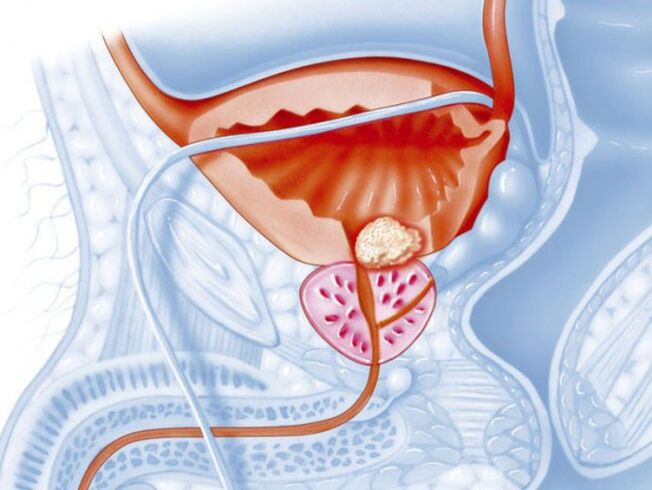
The most obvious symptoms of bacterial prostatitis include burning, pain during urination, and cloudy discharge.The urine smells bad.General symptoms accompanying poisoning were observed: dizziness, weakness, nausea, fever.There is pain during ejaculation and sometimes there is blood.With chronic bacterial prostatitis, urination may become more frequent and yellow or green discharge may occur from the genitals.
calculus prostatitis
With calculus prostatitis, stones form in the prostate ducts.The disease is complex and associated with severe pain.Conglomerates come from many sources: phosphates, oxalates, mainly calcium and proteins.
Stones form in the ducts for two reasons: stasis of glandular contents and reflux of urine into the prostate.
Stagnation is related to various factors that interfere with the normal outflow of secretions.Prolonged abstinence, hyperplasia, the presence of tumors that close the ducts and a sedentary lifestyle lead to stagnation of secretions and destruction of the vascular and lymphatic systems.
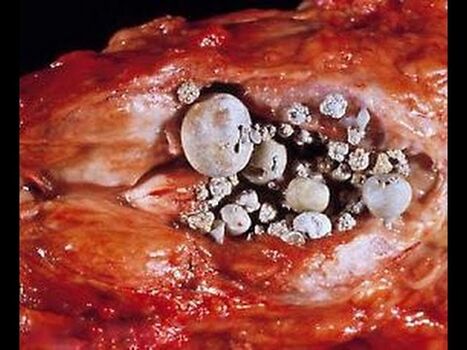
Urinary reflux is caused by sphincter dysfunction, where the sphincter relaxes and allows urine to flow out and in.The presence of stones and sand in the bladder can lead to the formation of stones in the prostate ducts.They are carried there by urine, settle and continue to grow, eventually shrinking the exit.Genital injury and surgical intervention may lead to sphincter dysfunction.
Initially, calculus prostatitis is asymptomatic.As the stone grows, symptoms may appear and worsen.Pain in the lower abdomen or scrotum that radiates to the buttocks and lower back.Pain does not occur at rest and occurs only with physical activity, defecation and urination, sexual intercourse, and walking.
Large rocks with sharp edges can damage the canal during movement, which can cause not only pain but blood in the urine and ejaculation.Wounds caused by stones are easily infected, which can lead to the transformation of stone prostatitis into contagious disease.
After about a month, with calculus prostatitis, the functions of the entire body will be disturbed, and people will feel discomfort, insomnia, fatigue, and irritability.
In the advanced stages of prostatitis, after a complete diagnostic workup, medications are prescribed and surgical treatment is performed to remove the stones.
congestive prostatitis
Stagnant prostatitis occurs due to retention of secretions in the prostate.Most commonly, this type of problem occurs in men who work sedentary jobs and do not participate in physical activity.Due to lack of exercise, the blood circulation of the pelvic organs is impaired, the prostate is deprived of oxygen and nutrients, and stagnation and inflammation occur.If nothing is done, the disease can become chronic and cause great discomfort.
Congestive prostatitis is caused by an irregular or complete lack of sex life.In this case, the man must clear the secretions of the gland on his own, but not to excess, since frequent masturbation can cause damage due to incomplete ejaculation.Many couples have found their own methods of preventing pregnancy, such as interrupting sexual intercourse.This can also lead to incomplete ejaculation and inflammation.
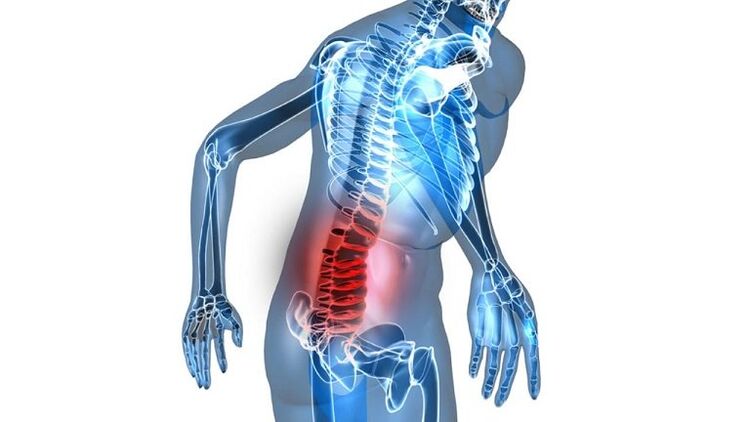
Sometimes the trigger is hypothermia or varicose veins.Structural abnormalities of the prostate can also cause stagnation.Frequent overheating of the pelvic area and persistent constipation can adversely affect the production of secretions.There are several types of congestive prostatitis, depending on what triggers the disease.
- Venous prostatitis.It occurs in people with varicose veins in the lower limbs.This disease affects all the organs within the pelvis due to improper blood circulation.
- Congestion.Develops as the prostate is partially emptied.Gradual overflow leads to stagnation.
- Chronic.This occurs when an incorrect lifestyle becomes a habit.If nothing is done to change the condition, the disease can become chronic.The condition is more common in single men who develop obesity in adulthood, when the medical history is complicated by concomitant medical conditions.During this stage, the prostate is often enlarged and can be easily determined by examination.
- Contagious.When infection enters the genitourinary system, it joins existing inflammation of the prostate.
Symptoms of prostatitis are caused by difficulty urinating, groin pain, straining during bowel movements, and decreased sexual activity.Due to these symptoms, congestive prostatitis can lead to poor health, irritability, decreased performance, and disturbed sleep.
infectious prostatitis
Microorganisms that may cause symptoms of acute prostatitis include Escherichia coli, Staphylococcus aureus, Proteus, Etyrococcus, and Klebsiella.Some bacteria are always present in the body, but in a dormant state, and they do not contribute to the inflammatory process.When passing through the urethra and reaching the prostate mucosa, microorganisms begin to develop and multiply, causing inflammation.Indiscriminate and unprotected sex can also allow harmful bacteria to enter the body.
Characteristic symptoms are pain in the scrotum, perineum, lower abdomen, lower back, and pelvic pain and burning sensation.Difficulty urinating and acute urinary retention.In addition to the above symptoms of infectious prostatitis, constipation, urethral discharge, hematospermia, and pain during ejaculation may also occur.
This is a dangerous disease that, even in its earliest stages, can cause infection in sexual partners, lead to systemic blood poisoning or develop into pyelonephritis and cystitis.
suppurative prostatitis
Suppurative prostatitis usually occurs when a bacterial infection enters the prostate.The disease occurs in four stages.
- Catarrhal.Occurs after having an acute respiratory viral infection, sore throat, or influenza.Purulent content in urine.Burning sensation when emptying the bladder.Patients notice reduced effectiveness.The process that accompanies this type of prostatitis involves the surface tissue of the prostate.
- focus.This process extends into glandular tissue.The duct becomes distended and outflow is disturbed.As pus accumulates in the glands, the glands increase in size and the pus is excreted in the urine.Increased body temperature.
- Parenchyma.Connective tissue participates in this process, the swelling becomes larger, and the temperature can reach 40°C.The throbbing pain in the anus makes it impossible to rest, and there is a false urge to defecate.
- abscess.The most hidden form of prostatitis.The body temperature drops sharply, there is a lot of pus, and the pain is unbearable.This stage may be complicated by peritonitis and may be fatal.
Suppurative prostatitis can be complicated by pararectitis, accessory cystitis, abscess, sepsis and other symptoms and diseases.Typically, these conditions are treated surgically and involve removal of the pus pockets.
diagnosis
Diagnosis of the type of prostatitis is not particularly difficult. First, a medical history must be collected, which will help to understand the disease more accurately.A rectal examination is then performed to determine the size of the glands, determine the nature of the pain, and detect the presence of swelling and induration.
In order to make a correct diagnosis, laboratory tests are required:
- urine test;
- Urine culture and AB sensitivity test;
- General blood tests;
- Prostate secretion analysis;
- Blood biochemistry tests;
- Rectal examination.
Other diagnostics include instrumental research methods.First, an ultrasound is performed; if necessary, additional MRI and TRUS are performed.Recently, a new PET examination method has emerged; it is considered the most informative.
Treat inflammation
Urologists treat all types of prostatitis.Traditional methods are great, but they must be accompanied by a medical prescription and approved by your treating physician.
It is first necessary to find out the cause of the disease, and then symptomatic treatment can be carried out.
- Aggressive antimicrobial treatment can help cure prostatitis.Antibiotics are most effective when given parenterally.
- For severe pain, painkillers and diuretics are needed.
- For constipation, laxatives may be taken.
- For severe pain and difficulty urinating, novocaine blockers may be used.
- Courses of vitamin therapy and immune correctors are indicated.
- It is worth adhering to a special diet that excludes spicy, salty and smoked foods.
- Bed rest was prescribed.
Local treatments include sitz baths with water two degrees warmer than body temperature.An enema is made from a decoction of anti-inflammatory herbs plus 1% anesthetic, which slowly introduces the contents into the intestine and retains them in the intestine for as long as the patient can tolerate it.
Physical therapy can also be beneficial in restoring prostate function.Prostate massage is prohibited for acute prostatitis, but prostate massage is recommended for chronic prostatitis.To restore metabolism, normal blood circulation and relieve swelling, UHF and microwaves are used.
If urination is delayed for a long time, a urinary catheter is installed.At certain stages of the disease, surgical treatment is required to open the pus sac and install a drainage tube.
Treatment of acute prostatitis takes several weeks to a month.Good results are usually observed.If the condition becomes complex or has reached a chronic stage, the process can be complex and lengthy, possibly taking several months.
During treatment, sexual activity should be limited and personal protective equipment should be used.
Medical physiotherapy equipment helps treat prostatitis.It effectively eliminates the symptoms of prostatitis, enables the restoration of reduced sexual activity, eliminates pain, reduces swelling and inflammation.The device can be used at home to treat and prevent pelvic organ disease.
The device will relieve muscle tension, improve sperm production, strengthen blood vessels and prevent the development of other possible diseases of the pelvis.Used to treat prostatitis in men, the device is easy to use, equipped with heating and vibration mode regulators, and runs on mains power.The compact size allows the device to be used in any conditions.
How to prevent the development of disease?
To prevent various types of prostatitis, like other diseases, we must maintain a healthy lifestyle, avoid bad habits, and eat a balanced diet.If you have been diagnosed with prostatitis, you should not neglect exercise.If any inflammation occurs, seek medical attention immediately to eliminate the cause and prevent the infection from spreading to other organs.
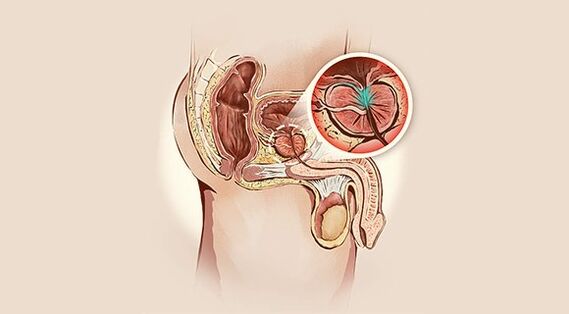
You should live a decent lifestyle and have sex regularly with a regular partner.It is important not to forget personal hygiene of the reproductive organs and not to neglect regular preventive examinations with a urologist.If a man knows what prostatitis is and at the same time leads a negative lifestyle, he needs to do exercises to prevent pelvic congestion.
Let's summarize
Acute and chronic types of prostatitis are diagnosed depending on the cause and characteristics of the course of the disease.Another group includes chronic pelvic pain syndrome.Acute prostatitis is characterized by clinical manifestations such as chills, fever, and pain.The chronic form may not manifest itself in any way, or there may be a vague picture: urinary disturbances, pain in the pelvic area, which, as complications develop, may lead to impotence and loss of fertility.
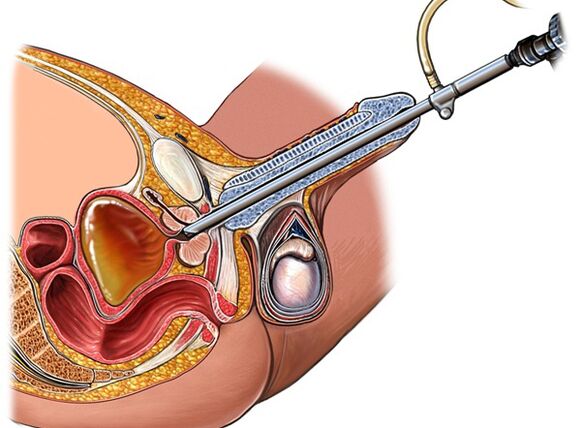
Acute prostatitis has a sudden onset and is easy to diagnose.In contrast, chronic prostatitis occurs in waves, with periods of remission and exacerbation alternating.In chronic cases, identification of the causative microorganism may pose certain difficulties.Focuses of infection occurring in the genitourinary system can cause complications in the form of disease in organs anatomically adjacent to the prostate.Depending on the type of prostatitis diagnosed, a urologist will prescribe a differentiated treatment plan.























